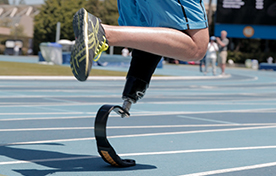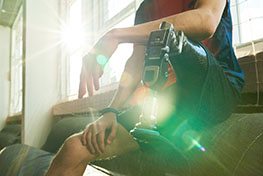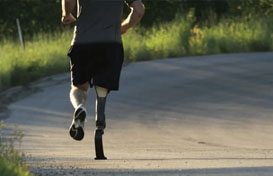Fitness for Kids
As you prepare your children for school, you should also think about how active your children are. Childhood obesity has become a national epidemic. Over the past 30 years, childhood obesity rates in America have tripled. Today, nearly one in three children in America is overweight or obese, with the highest percentage of obesity among children of low-income families. One-third of all children born in 2000 or later will suffer from diabetes at some point in their lives.
“An active lifestyle, combined with healthy eating, is the number one way to prevent obesity and key to preventing a host of serious obesityrelated diseases,” says Health and Human Services Secretary Kathleen Sebelius. Fitness programs for children can help address the obesity issue. In addition to the health benefits, studies show that participation in such programs correlates with better educational outcomes.
Following are some resources to help you get your child started with a fitness program.
First Lady Michelle Obama’s “Let’s Move” campaign aims to end childhood obesity within a generation, emphasizing fitness. The program offers suggestions on how to help your child get and stay physically fit at letsmove.gov/getactive.php.
Action for Healthy Kids has resources for parents to help kids stay healthy – just go to the search function at actionforhealthykids.org.
The American Academy of Pediatrics has fitness tips for teens at healthychildren.org/english/ages-stages/teen/fitness/
The American Heart Association outlines its Healthier Kids programs at americanheart.org/presenter.jhtml?identifier=1477.
The Apps for Healthy Kids competition at appsforhealthykids.com is part of the Let’s Move campaign.
The Centers for Disease Control and Prevention offers the Body And Mind (BAM!) Website, with resources and activities to get kids moving at www.bam.gov/sub_physicalactivity.
The Department of Health and Human Services provides fitness ideas and information specifically for girls at girlshealth.gov/fitness and womenshealth.gov/bodyworks.
Dr. Oz’s HealthCorps has resources for fitness programs at healthcorps.net.
IDEA Health and Fitness Association of Fitness and Wellness Professionals has articles on kids’ fitness programs at ideafit.com/kids-fitness.
The Mayo Clinic offers suggestions for getting children off the couch at mayoclinic.com/health/fitness/FL00030.
Medline Plus updates news about children and exercise at nlm.nih.gov/medlineplus/alphanews_e.html#exerciseforchildren.
The National Center on Physical Activity and Disability (NCPAD) has information on exercise and activities for children – a list of youth fitness programs across the country can be found at ncpad.org/programs.
The National Heart and Lung Institute of the National Institutes for Health gives the details on its We Can! (Ways to Enhance Children’s Activity & Nutrition) program at www.nhlbi.nih.gov/health/public/heart/obesity/wecan.
The pediatric health system Nemours has information about keeping kids active at kidshealth.org.
PE Central offers a collection of online programs intended to motivate children of all ages to become more physically active (including a section on adapted physical education) at pecentral.org/kids_programs/home.shtml.
The President’s Council on Physical Fitness and Sports lists President’s Challenge activities for different age groups at fitness.gov/challenge.
Running USA, a nonprofit organization promoting the sport of running, lists programs and resources in its Resource Center for Youth Running and Fitness at runningrocks.com.
The United States Department of Agriculture supports the Eat Smart. Play Hard. Healthy Lifestyle! site at www.fns.usda.gov/eatsmartplayhardhealthylifestyle.
The United Way presents various fitness initiatives for kids at liveunited.org/pages/kids-get-fit
The Weight-control Information Network (WIN), sponsored by the National Institute of Diabetes and Digestive and Kidney Diseases, offers suggestions for teens to stay healthy at win.niddk.nih.gov/publications/ take_charge.htm.
Disclaimer: The following information is provided and owned by the Amputation Coalition of America and was previously published on the website http://www.amputee-coalition.org or the Coalitions Newsletter, inMotion.








